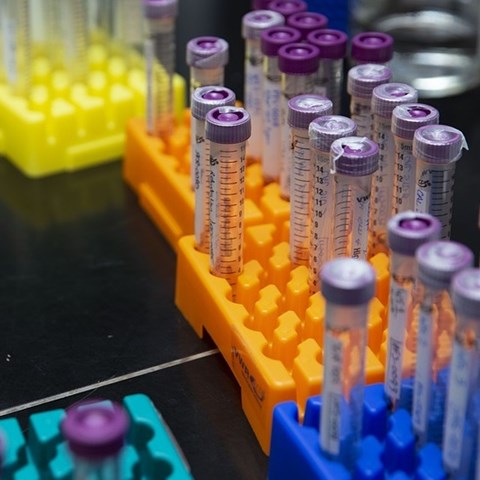Contact
Eva Skiöldebrand, Professor
Department of Biomedical Sciences and Veterinary Public Health, SLU
eva.skioldebrand@slu.se, +46 18-67 21 72

Osteoarthritis is a pain-associated progressive disease and pain mediators, such as opioid receptors, expressed in articular cartilage could represent novel therapeutic targets. Acute and chronic stages of OA indicate different metabolic abilities of the chondrocytes depending on inflammatory state. This study aimed to investigate the response of healthy and osteoarthritic chondrocytes and their expression and release of pain mediators in response to acute inflammation.
Interleukin-1 beta (IL-1β) and lipopolysaccharide (LPS) were used to induce an acute inflammatory response in cultured equine chondrocytes harvested from healthy joints (HC) and osteoarthritic joints (OAC), the latter representing acute exacerbation of a chronic inflammatory state. Intracellular Ca2+ release was determined after exposure to serotonin (5-hydroxytryptamine (5-HT), glutamate or ATP. Protein expression levels of F- and G-actin, representing actin rearrangement, and opioid receptors were investigated. Glutamate concentrations in culture media were measured. Cartilage was immunohistochemically stained for µ (MOR), κ (KOR), and δ (DOR) opioid receptors.
Upon exposure to acute inflammatory stimuli, OAC showed increased intracellular Ca2+ release after 5-HT stimulation and increased expression of MOR and KOR. When cells were stimulated by inflammatory mediators, glutamate release was increased in both HC and OAC. Immunostaining for MOR was strong in OA cartilage, whereas KOR was less strongly expressed. DOR was not expressed by cultured HC and OAC and immunostaining of OA cartilage equivocal.
We show that chondrocytes in different inflammatory stages react differently to the neurotransmitter 5-HT with respect to intracellular Ca2+ release and expression of peripheral pain mediators.
Our findings suggest that opioids and neurotransmitters are important in the progression of equine OA. The inflammatory stage of OA (acute versus chronic) should be taken into consideration when therapeutic strategies are being developed.
https://doi.org/10.1016/j.vas.2019.100078
Eva Skiöldebrand, Cecilia Ley, Ulrika Björklund, Anders Lindahl, Elisabeth Hansson. Serotonin-evoked cytosolic Ca2+ release and opioid receptor expression are upregulated in articular cartilage chondrocytes from osteoarthritic joints in horses. Veterinary and Animal Science, Available online 27 September 2019,100078.
Eva Skiöldebrand, Professor
Department of Biomedical Sciences and Veterinary Public Health, SLU
eva.skioldebrand@slu.se, +46 18-67 21 72